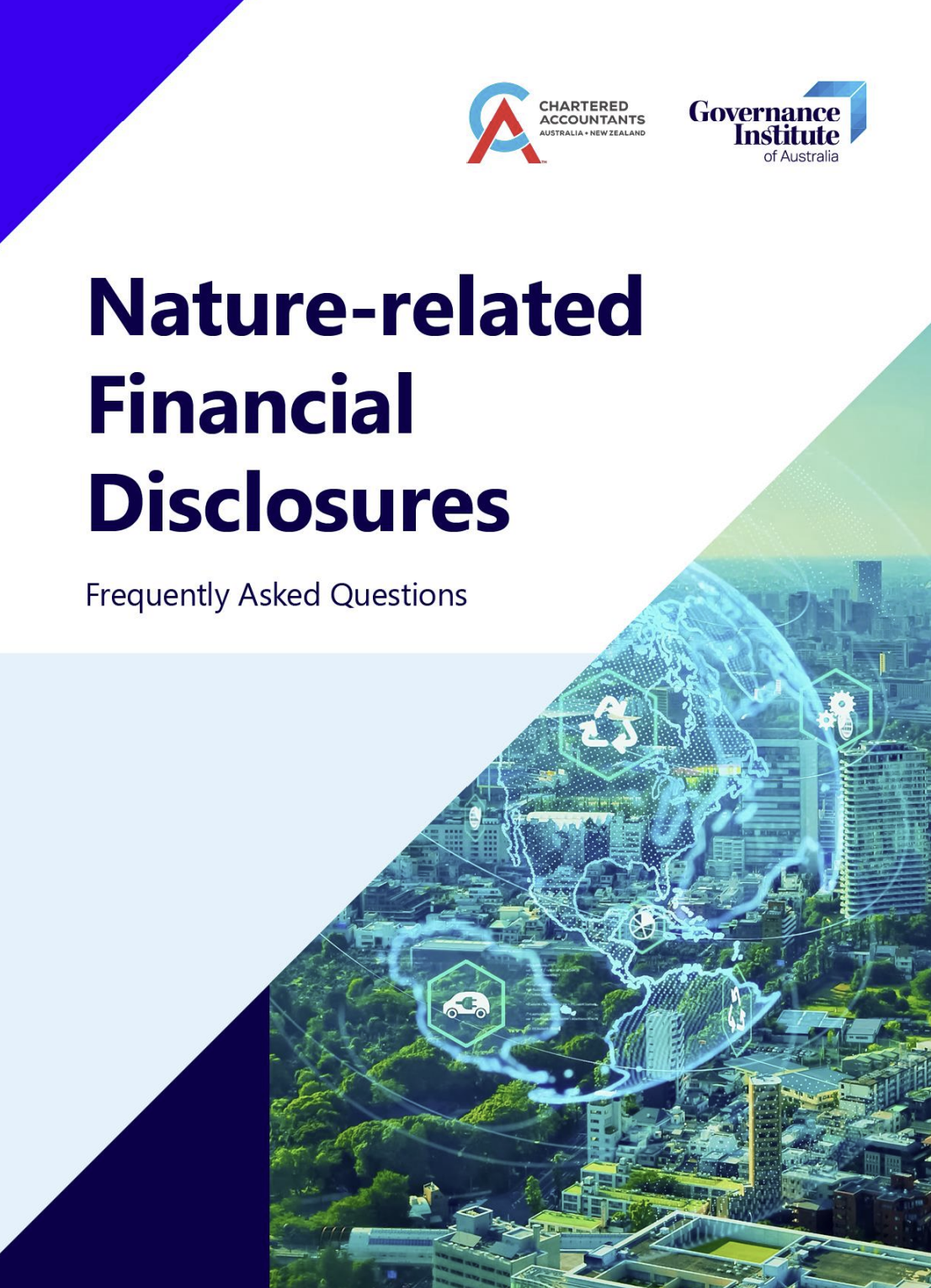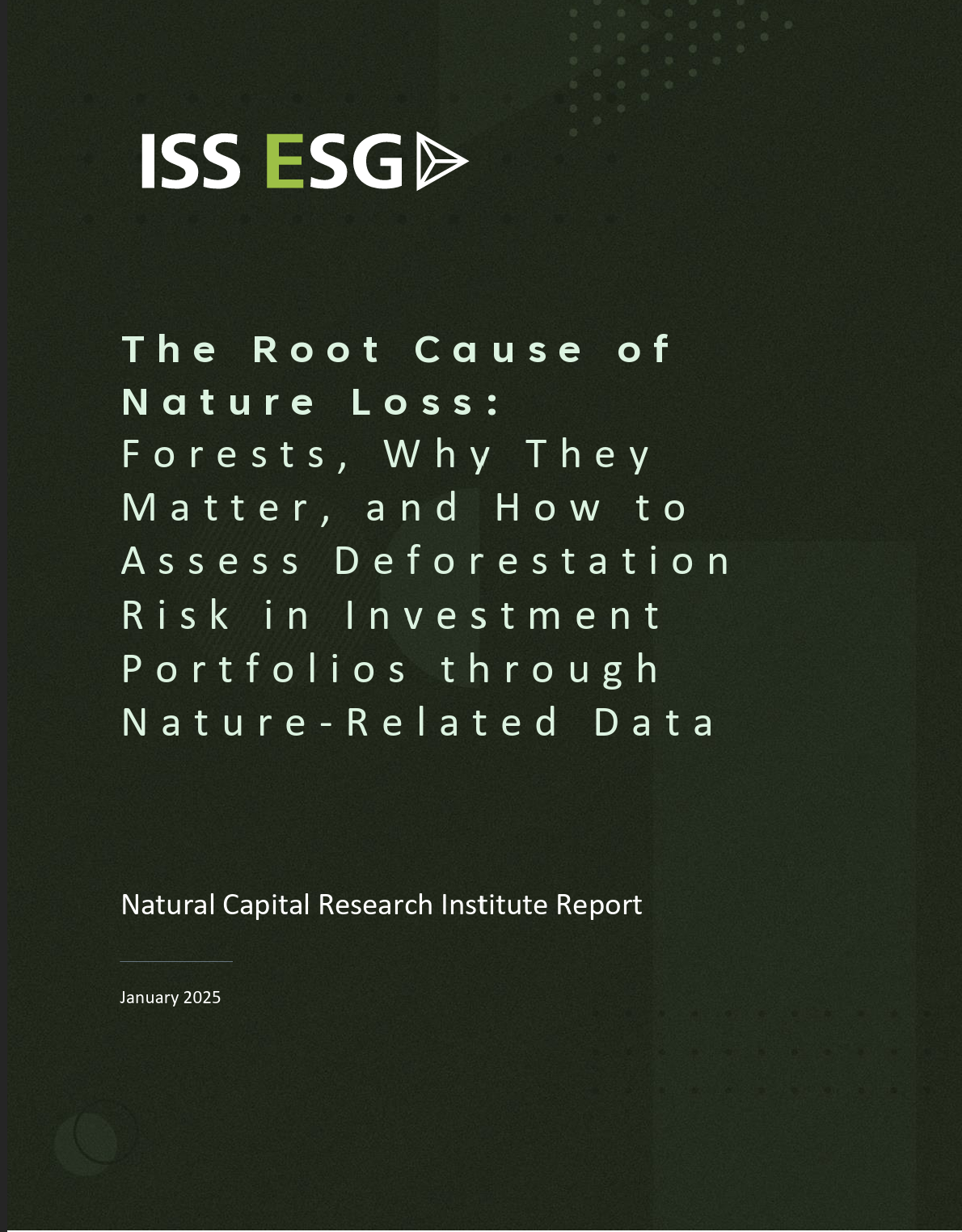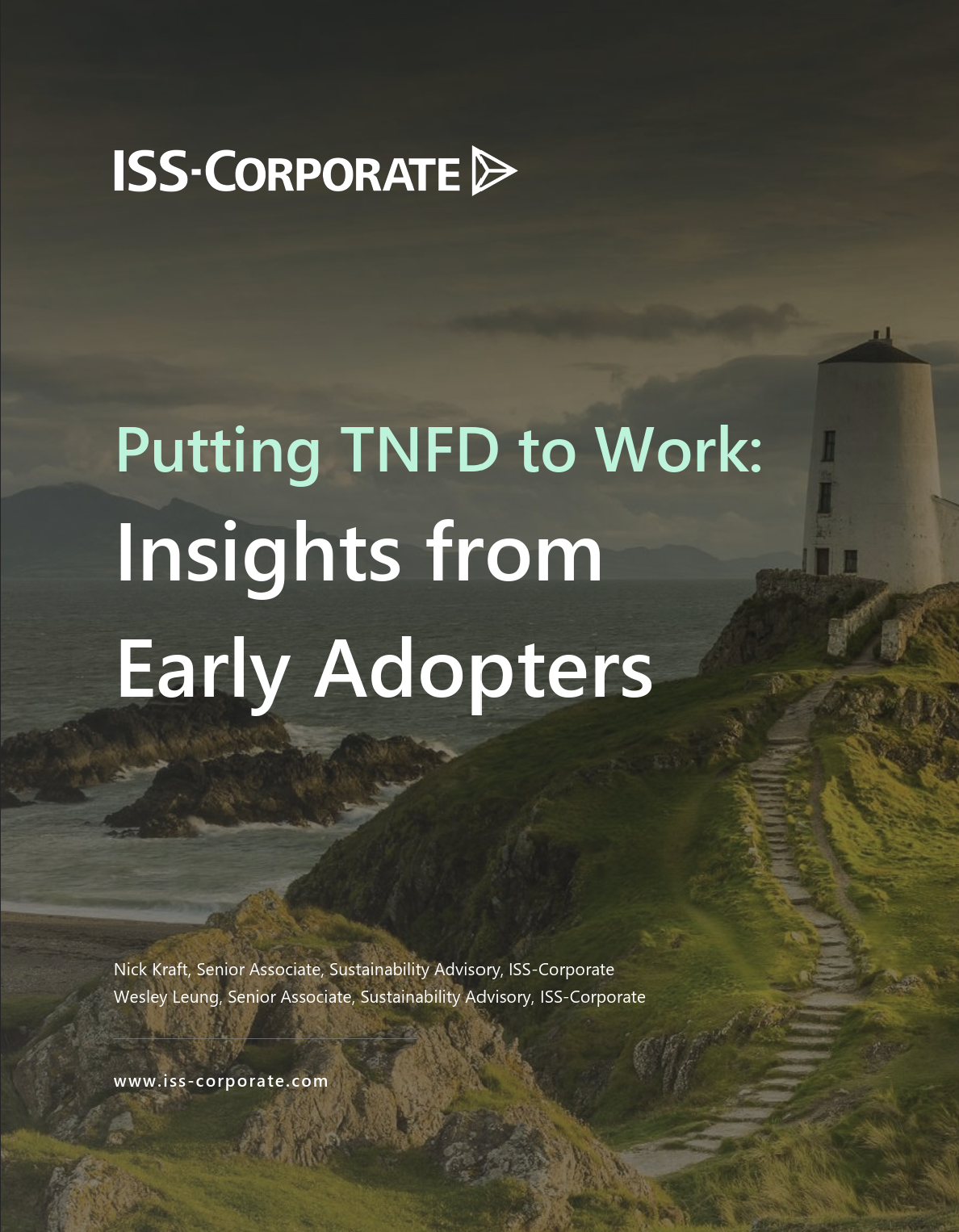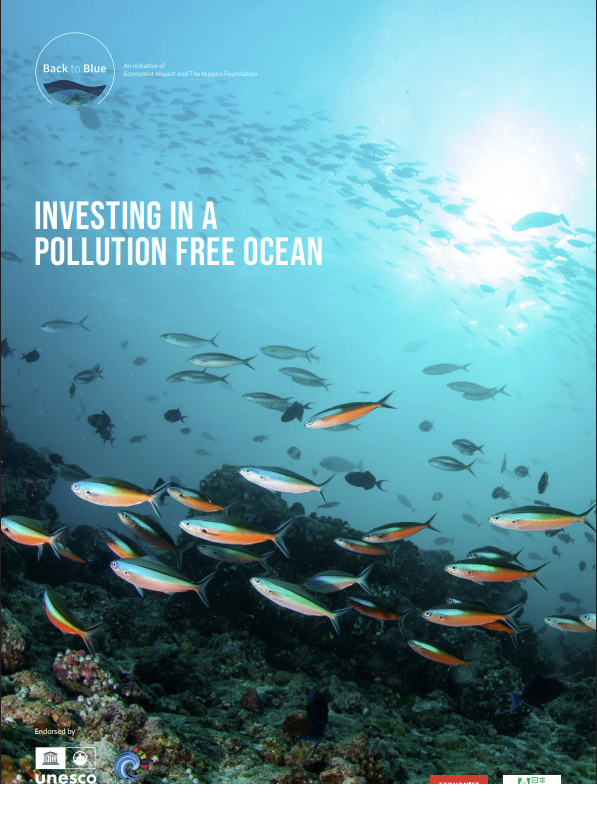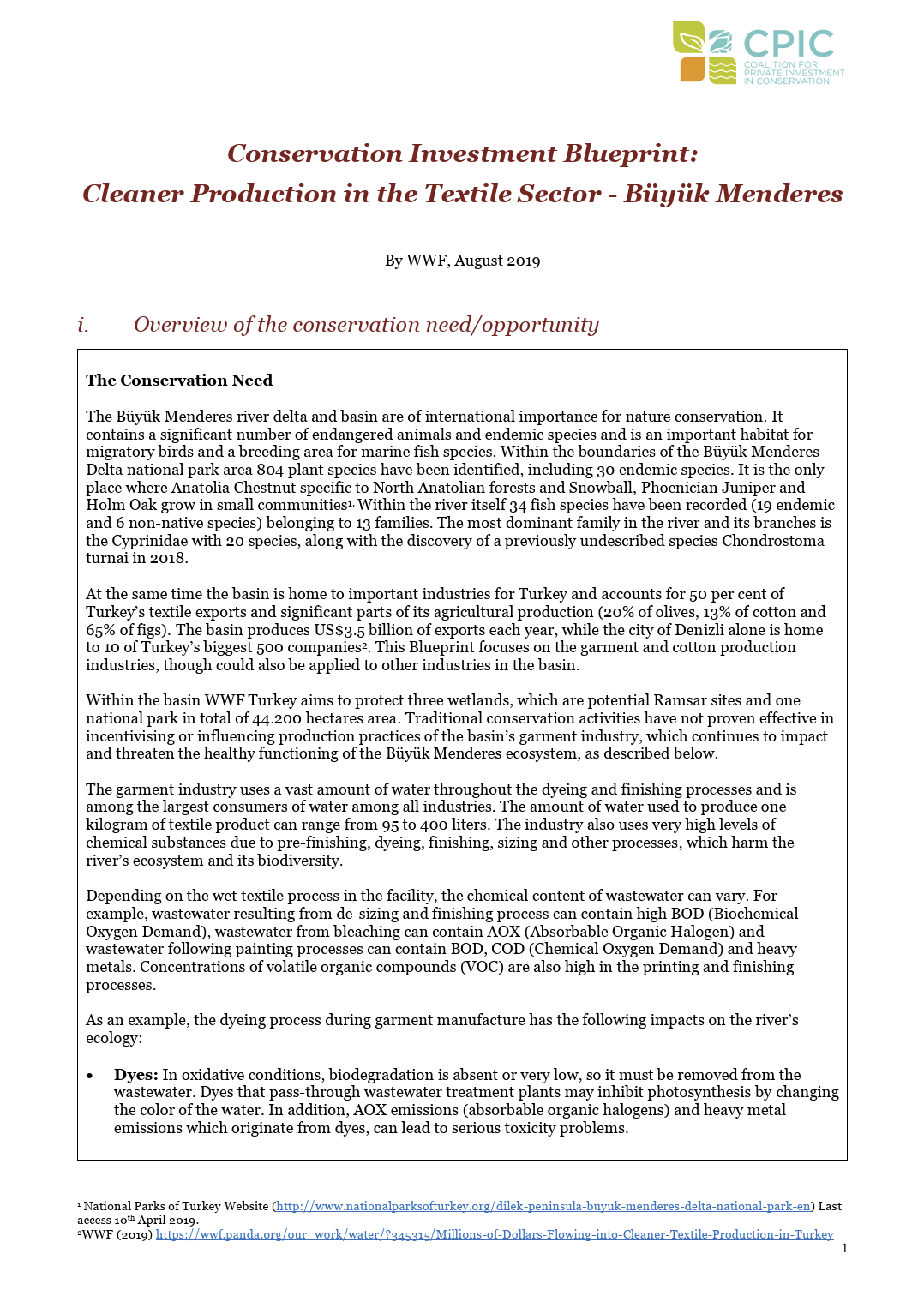Library | SASB Sustainability Sector
Resource Transformation
Refine
70 results
REFINE
SHOW: 16


Nature-related financial disclosures: Frequently asked questions
This FAQ guide explains key concepts in nature-related financial disclosures, including biodiversity, dependencies, impacts, and the TNFD framework. It outlines disclosure requirements, materiality, governance responsibilities, and greenwashing risks, offering practical insights for businesses preparing for future regulatory expectations and aligning with international sustainability standards.
The root cause of nature loss: Forests, why they matter, and how to assess deforestation risk in investment portfolios through nature-related data
This report outlines how deforestation, particularly in tropical forests, is a key driver of biodiversity loss and climate change. It presents the risks to institutional investors—physical, transition, and systemic—and offers a framework to assess deforestation exposure in portfolios using nature-related data and metrics across sectors and geographies..
Putting TNFD to work: Insights from early adopters
This report analyses how early adopters are implementing the TNFD framework, highlighting integration with climate disclosures, flexible use of the LEAP approach, and application of data tools. Insights show how businesses align nature-related risks with strategy and reporting, with regional uptake led by Asia Pacific and Europe.
Investing in a pollution free ocean
The report explores how ocean pollution poses financial, legal and reputational risks to businesses, particularly land-based sectors. It identifies data gaps as a barrier to effective decision-making and highlights opportunities in green chemistry, data innovation and sustainable finance. It recommends integrating ocean health into corporate and financial strategies.
International Council on Mining and Metals
The International Council on Mining and Metals (ICMM) is a global leadership organisation dedicated to enhancing the mining and metals industry's contribution to sustainable development. ICMM brings together a third of the global industry, promoting ethical business practices, environmental stewardship, and social responsibility. Members commit to stringent Mining Principles, aiming for a safe, just, and sustainable world enabled by responsibly produced minerals and metals.
Conservation investment blueprint: Cleaner production in the textile sector - Büyük Menderes
The report outlines a conservation investment blueprint aimed at reducing water and chemical pollution in Turkey’s Büyük Menderes River Basin by improving cleaner production practices in the textile sector. It details financial models, stakeholder incentives, and replicability to enhance ecosystem health while maintaining industry competitiveness and regulatory compliance.
OECD due diligence guidance for meaningful stakeholder engagement in the extractive sector
The guide helps financial institutions mitigate risks and enhance transparency by providing a framework for effective stakeholder engagement. This guidance supports informed and responsible investment decisions, ultimately improving relationships with affected communities and reducing potential legal and operational challenges.
Stakeholder engagement: A good practice handbook for companies doing business in emerging markets
This guide offers a comprehensive framework for involving stakeholders in development projects. They aim to achieve effective communication, transparency, and inclusive participation, ensuring that the concerns and interests of all stakeholders, including vulnerable groups, are considered. This promotes better project outcomes, reduces risks, builds trust, and fosters sustainable and equitable development.
Nature target setting framework for asset managers and asset owners
The framework seeks to create a shared understanding and common language for investors on target setting, while steering private financial flows in alignment with the mission of the Global Biodiversity Framework to halt and reverse biodiversity loss by 2030. It focuses on listed equity and corporate bonds.
Guidance on scenario analysis
This document provides guidance for organisations who choose to use scenario analysis to explore the possible consequences of nature loss and climate change, the ways in which governments, markets and society might respond, and the implications of these uncertainties for business strategy and financial planning. It includes a collection of practical tools, templates and techniques, in addition to general guidance. This guidance supports organisations in conducting a qualitative scenario workshop, focusing the exercise on testing, refining and stretching their thinking, planning and decision-making.
When the bee stings: Counting the cost of nature-related risks
In collaboration with the TNFD, and aligned with its newly released recommendations, BloombergNEF has examined 10 instances of companies suffering material financial losses, the threat of such losses and share price pressure from poorly handled interactions with nature. The case studies demonstrate the financial importance of a business understanding and managing its impacts and dependencies on the natural world.
Financing the nature-positive transition: Understanding the role of banks, investors and insurers
This CEO brief by the WEF focuses on the business case for nature, highlighting the importance of integrating nature into financial decision-making to achieve sustainable economic growth and biodiversity conservation.
Australia's State of the Environment 2021
This website hosts the Australia State of the Environment Report, which provides comprehensive assessments of the condition of Australia's environment. The report covers various themes, including biodiversity, land, inland water, coasts, marine environment, atmosphere, and heritage. It offers valuable insights into environmental trends, pressures, and management actions, supporting informed policy and decision-making for sustainable development.
Top 10 biodiversity-impact ranking of company industries
This briefing paper employs four biodiversity impact measurement tools to provide biodiversity footprint scores of high-impact sectors and industries. It also provides investors with a ranking of companies based on their biodiversity impacts, helping identify high-impact areas and prioritise engagement and investment strategies.
Exploring nature impacts and dependencies: A field guide to eight key sectors
This field guide helps investors identify and assess nature-related impacts and dependencies across eight key sectors. It provides sector-specific insights and strategies for integrating nature considerations into investment decisions.
Aqueduct Water Risk Atlas
Aqueduct's global water risk mapping tool helps companies, investors, governments, and other users understand where and how water risks and opportunities are emerging worldwide. The Atlas uses a robust, peer reviewed methodology and the best-available data to create high-resolution, customizable global maps of water risk.
